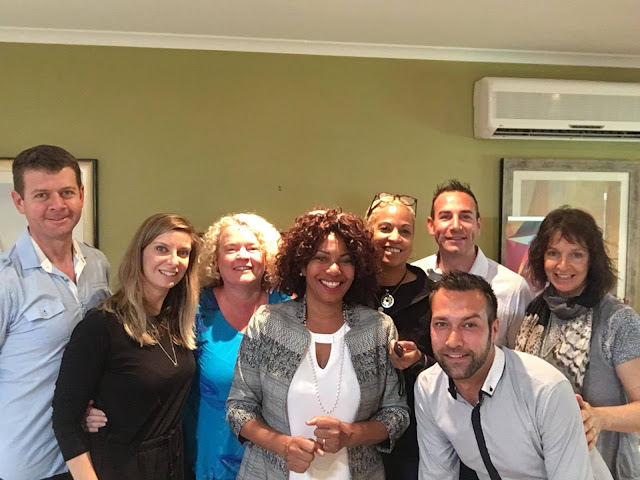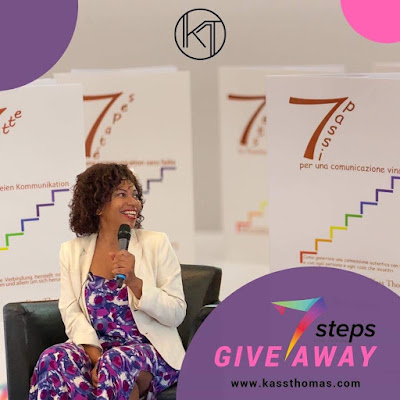per il testo italiano scorri in basso
pour la langue française, voir en-dessous
What is the easiest way to get back to you – when you lose yourself?
by Kass Thomas
There are always moments – which could last seconds, hours, days, weeks – where you suddenly realize: this is not me. When you become aware that something is wrong and you are behaving in a way that is different from how you want to behave, there is a process you can undergo, consciously or subconsciously, that helps you get back to your true self.
You need to be aware of how you get back to who you truly are in order to understand yourself better. What makes you refocus, re-centre and return to your mind, body and being?
- Identification: Am I not being myself? What is the situation I am in- is it causing me stress?
- Accountability: What are the emotions that are blocking me from being myself? How do I want to behave?
- Choosing the Right Path for You: How do I get back to me? What are the activities and actions that will allow me find my path back to who I really am?
In order to run through my experience with this, here is my journey on how I get back to myself.
- Identification: It is easy for me to recognize when I am not being myself. How, you ask?
To know when you are away from you, you need to first be completely aware of yourself as a person. What is your most recurring emotion? How do you react in a pressurised situation? How do you react in a favourable situation? Once you have answered questions like these, it will be easy to identify when you are not being your true self.
At times when I feel unnecessarily cranky, nervous, irritable or I simply take myself too seriously, I realize- this is not me. This is not how I choose to react, and so I will change this.
- Accountability: We all have a certain set of emotions that we revolve around- for me, it is happy, free-flowing, laughter (humour) and energy. As soon as you identify emotions that you don’t normally feel, you have a feeling that something is wrong. Emotions give way to undesirable actions, and sometimes you might even shock yourself that you are behaving a certain way. Backtrack, and identify the actions, and find out the source of the actions- which are emotions. If I find myself angry, irritable, befuddled or discombobulated, I immediately STOP, and I ask myself- What is wrong? Why am I behaving this way? How do I get back to me, and what will make me calm down enough to enter my own space again?
- Choosing the Right Path: We all have different ways to refocus, recentre and return to ourselves. The place we want to reach is a completely calm, focussed and relaxed space. How we get there, is up to us.
What calms you down? What are the actions that make you feel close to yourself?
It could be reading, singing, dancing or even taking a nap!
Something that helps me feel close to myself is merely stopping to observe the simplicity and ease of my surroundings. I could connect with a tree, the sea, the sky or even an animal.
Then, if I connect with a tree, I might focus on its leaves, the softness with which they move with the breeze, or the flower beside it, so effortless in its simplicity, yet so wholesome with the complexity of its functions and structure.
I might watch a cat, gracefully striding and suddenly stopping, watching with its sharp eyes, taking in its surrounding and truly registering it. I connect with the cat, and for a moment, take in the surroundings through its eyes, through its focus and objectivity.
Find your rhythm, find your path. Remember to always get back to you, because you are the best space for yourself.
***
Qual è il modo più facile per tornare a te – quando perdi te stesso?
di Kass Thomas
Ci sono sempre momenti – che potrebbero durare secondi, ore, giorni, settimane – dove all’improvviso realizziamo: “questa non sono io”. dove all’improvviso realizzi: questo non sono io. Quando diventi consapevole che qualcosa non va e ti stai comportando in un modo diverso da come vorresti comportarti, c’è un processo a cui puoi essere sottoposto, consciamente o inconsciamente, che ti aiuta a tornare al tuo vero sé.
Per capire meglio noi stessi, abbiamo bisogno di consapevolezza e di riconnetterci con noi stessi.
Che cosa ci fa focalizzare di nuovo, ri-centrare e tornare alla nostra mente, al nostro corpo e al nostro Essere?
- Identificazione: Non sono me stesso? La situazione in cui sono adesso è per me fonte di stress?
- Responsabilità: quali sono le emozioni che mi impediscono di essere me stesso? Come voglio comportarmi?
- Scegliere la strada giusta per te: Come posso tornare ad essere me stesso? Quali sono le attività e le azioni che mi permetteranno di ritrovare il mio percorso verso chi sono veramente?
Per riportare la mia esperienza, ecco il modo in cui io torno a me stessa.
- Identificazione: è facile per me riconoscere quando non sono me stessa. “Come?” ti chiederai.
Per sapere quando sei lontano da chi sei veramente, devi prima essere completamente consapevole di te stesso come persona. Qual è la tua emozione più ricorrente? Come reagisci quando sei sotto pressione? Come reagisci in una situazione favorevole? Una volta che avrai risposto a queste domande, sarà facile capire quando non sei te stesso.
A volte, quando mi sento scontrosa, nervosa, irritabile senza motivo o semplicemente mi prendo troppo sul serio, mi rendo conto: “questa non sono io. Questo non è il modo in cui scelgo di reagire” e quindi lo cambio.
- Responsabilità: Tutti noi abbiamo un certo tipo di emozioni che ci girano intorno – per me sono felicità, fluire liberamente, risate (umorismo) ed energia. Non appena identifichi emozioni che non senti normalmente, hai la sensazione che qualcosa non va. Le emozioni lasciano il posto a azioni indesiderabili, e a volte potresti perfino essere scioccato dal comportarti in un certo modo. Torna indietro, identifica le azioni e scopri la fonte delle azioni, ovvero le emozioni. Se mi scopro arrabbiata, irritabile, confusa o scombussolata, mi fermo immediatamente e mi chiedo: “cosa c’è che non va? Perché mi sto comportando in questo modo? Cosa mi farà ritrovare la calma e tornare di nuovo nel mio spazio?”
- Scegli la strada giusta: tutti noi abbiamo modi diversi di rifocalizzarci, ri-centrarci e tornare a noi stessi. Il luogo che vogliamo raggiungere è uno spazio completamente calmo, focalizzato e rilassato. Come arrivarci sta a noi. Cosa ti calma? Quali sono le azioni che ti fanno sentire vicino a te stesso? Potrebbe essere leggere, cantare, ballare o anche fare un riposino!
Qualcosa che mi aiuta a sentirmi vicino a me è semplicemente fermarmi ad osservare la semplicità e la facilità di ciò che mi circonda. Potrei connettermi con un albero, il mare, il cielo o persino un animale.
Quindi, se mi collego con un albero, potrei concentrarmi sulle sue foglie, sulla delicatezza con cui si muovono con la brezza, o sul fiore lì accanto, così spontaneo nella sua semplicità, eppure così integrato con la complessità delle sue funzioni e della sua struttura.
Potrei guardare un gatto, che cammina aggraziato e poi si ferma all’improvviso, guardando con i suoi occhi acuti, osservando l’ambiente e recependolo davvero. Mi collego con il gatto e, per un momento, vedo l’ambiente attraverso i suoi occhi, attraverso la sua messa a fuoco e obiettività.
Trova il tuo ritmo, trova il tuo percorso. Ricordati di tornare sempre da te, perché sei lo spazio migliore per te stesso.
***
Quel est le moyen le plus simple de vous retrouver quand vous vous perdez ?
par Kass Thomas
Il y a toujours moments- qui peuvent durer quelques secondes, heures, jours, semaines, où nous réalisons tout à coup : je ne suis pas moi. Lorsque nous entrons dans cet espace où nous sommes conscients que quelque chose ne va pas, que quelque chose nous fait réagir plus que nous aimerion. Il existe un processus que nous subissons, consciemment ou inconsciemment, qui nous permet de revenir à notre vrai moi.
Nous avons besoin d’être conscients de la façon dont nous retrouvons qui nous sommes vraiment afin de mieux nous comprendre. Qu’est-ce qui nous fait nous concentrer, recentrer et revenir à notre esprit, notre corps et notre être ?
-
Identification : Est-ce que je ne suis pas moi-même ? Dans quelle situation suis-je qui me stresse ?
-
Responsabilité : Quelles sont les émotions qui m’empêchent d’être moi-même ? Quelles sont les actions qui m’ont permis de m’en rendre compte ? Ces actions sont-elles le résultat de ces émotions indésirables ?
-
Choisir le bon chemin : Comment puis-je revenir à moi ? Quelles sont les activités et les actions qui me permettront de retrouver le chemin vers qui je suis vraiment ?
Pour partager avec vous mon expérience avec ça, voici mon parcours sur comment je reviens vers moi-même.
-
-
Identification : Il est facile pour moi de reconnaître quand je ne suis pas moi-même. Comment, vous demandez ?
Pour savoir quand vous vous éloignez de vous, vous devez d’abord être complètement conscient de vous-même en tant que personne. Quelle est votre émotion la plus récurrente ? Comment réagissez-vous dans une situation qui vous met sous pression ? Comment réagissez-vous dans une situation qui vous est favorable ? Une fois que vous aurez répondu à des questions comme celles-ci, il vous sera facile de déterminer quand vous n’êtes pas vraiment vous.
Parfois, lorsque je me sens inutilement grincheuse, nerveuse, irritable ou que je me prends trop au sérieux, je réalise que ce n’est pas moi. Ce n’est pas ainsi que j’ai choisi de réagir et je vais donc changer cela.
-
Responsabilité : nous avons tous un certain ensemble d’émotions autour desquelles nous gravitons – pour moi, c’est la joie, la fluidité, le rire (humour) et l’énergie. Dès que vous identifiez des émotions que vous ne ressentez pas normalement, vous avez le sentiment que quelque chose ne va pas. Les émotions cèdent le pas à des actions indésirables, et parfois vous pourriez même être choqué de vous comporter d’une certaine manière. Revenez en arrière, identifiez les actions et identifiez la source de celles-ci, à savoir les émotions. Si je suis en colère, irritable, confuse ou déconcertée, je m’ARRÊTE immédiatement et je me demande: qu’est-ce qui ne va pas ? Pourquoi je me comporte de cette façon ? Comment puis-je retourner en moi et qu’est-ce qui me calmera suffisamment pour retourner dans mon propre espace ?
-
Choisir le bon chemin : Nous avons tous différentes façons de nous concentrer, de nous recentrer et de revenir à nous-mêmes. L’endroit que nous voulons atteindre est un espace complètement calme, concentré et détendu. Comment y arriver, ça ne tient qu’à nous.
Qu’est-ce qui vous calme ? Quelles sont les actions qui vous font vous sentir proche de vous ? Ce pourrait être lire, chanter, danser ou même faire une sieste !
Quelque chose qui m’aide à me sentir proche de moi est simplement de m’arrêter pour observer la simplicité et la facilité de mon environnement. Je peux me connecter avec un arbre, la mer, le ciel ou même un animal.
Ensuite, si je me connecte à un arbre, je peux me concentrer sur ses feuilles, la douceur avec laquelle elles se déplacent avec la brise, ou la fleur à côté, sans effort dans sa simplicité, mais tellement salutaire avec la complexité de ses fonctions et de sa structure.
Je peux regarder un chat marcher à grands pas et s’arrêter soudainement, regardant avec ses yeux perçants, pénétrant son environnement et l’enregistrant vraiment. Je me connecte avec le chat et, pendant un instant, j’observe l’environnement à travers ses yeux, sa perspicacité et son objectivité.
Trouvez votre rythme, votre chemin. Rappelez-vous de toujours revenir à vous, car vous êtes le meilleur espace pour vous-même.


